-
Adopt
-
Veterinary Care
Services
Client Information
- What to Expect – Angell Boston
- Client Rights and Responsibilities
- Payments / Financial Assistance
- Pharmacy
- Client Policies
- Our Doctors
- Grief Support / Counseling
- Directions and Parking
- Helpful “How-to” Pet Care
Online Payments
Emergency: Boston
Emergency: Waltham
Poison Control Hotline
-
Programs & Resources
- Careers
-
Donate Now
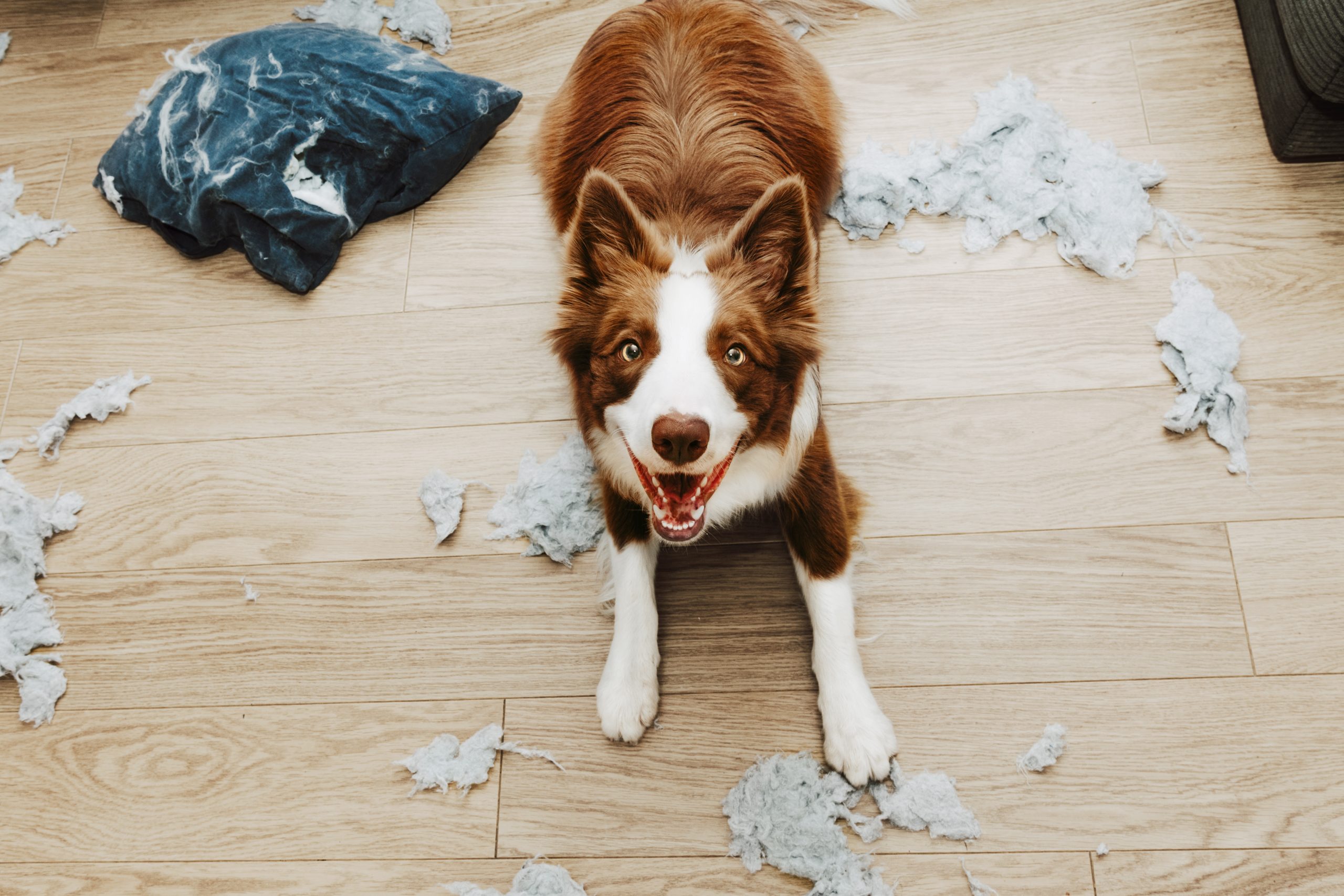 Do your neighbors complain about your dog barking for hours while you are away? Is your housetrained dog urinating or defecating when left alone?
Do your neighbors complain about your dog barking for hours while you are away? Is your housetrained dog urinating or defecating when left alone?
Your dog may be suffering from separation anxiety.
Dogs with separation anxiety can cause owners a great deal of frustration. By understanding the underlying causes, owners can mitigate some frustration by managing and treating their dog’s condition.
What is separation anxiety?
A dog experiencing any of the above symptoms might be suffering from a panic attack, according to Terri Bright, Ph.D., BCBA-D, CAAB, a behavior specialist at MSPCA-Angell. In most cases, separation anxiety symptoms begin within 30 minutes of being alone and include:
- Vocalization (howling, barking), sometimes for hours
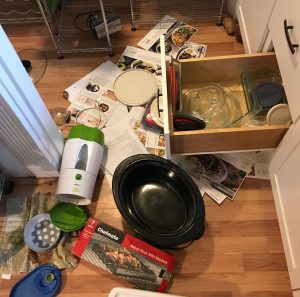
The author’s kitchen after a dog with separation anxiety was left home alone.
- Urination and/or defecation
- Attempts to escape
- Destructive behavior
Remember that your dog isn’t a “bad” dog when he behaves this way. “They are not being destructive on purpose; they are reacting to a change in their environment to which they are not accustomed,” Dr. Bright explained.
There is no apparent reason some dogs develop separation anxiety while others do not. Some say the condition primarily affects dogs who have lost their homes previously, but it can also affect rescue dogs and puppies from breeders. Some dog owners surrender their dogs to shelters when they cannot find a way to help them cope with separation anxiety.
What causes separation anxiety?
What causes a dog to experience fear and anxiety when left alone is unclear. Still, studies have shown that dogs with separation anxiety have likely experienced significant changes in their circumstances.
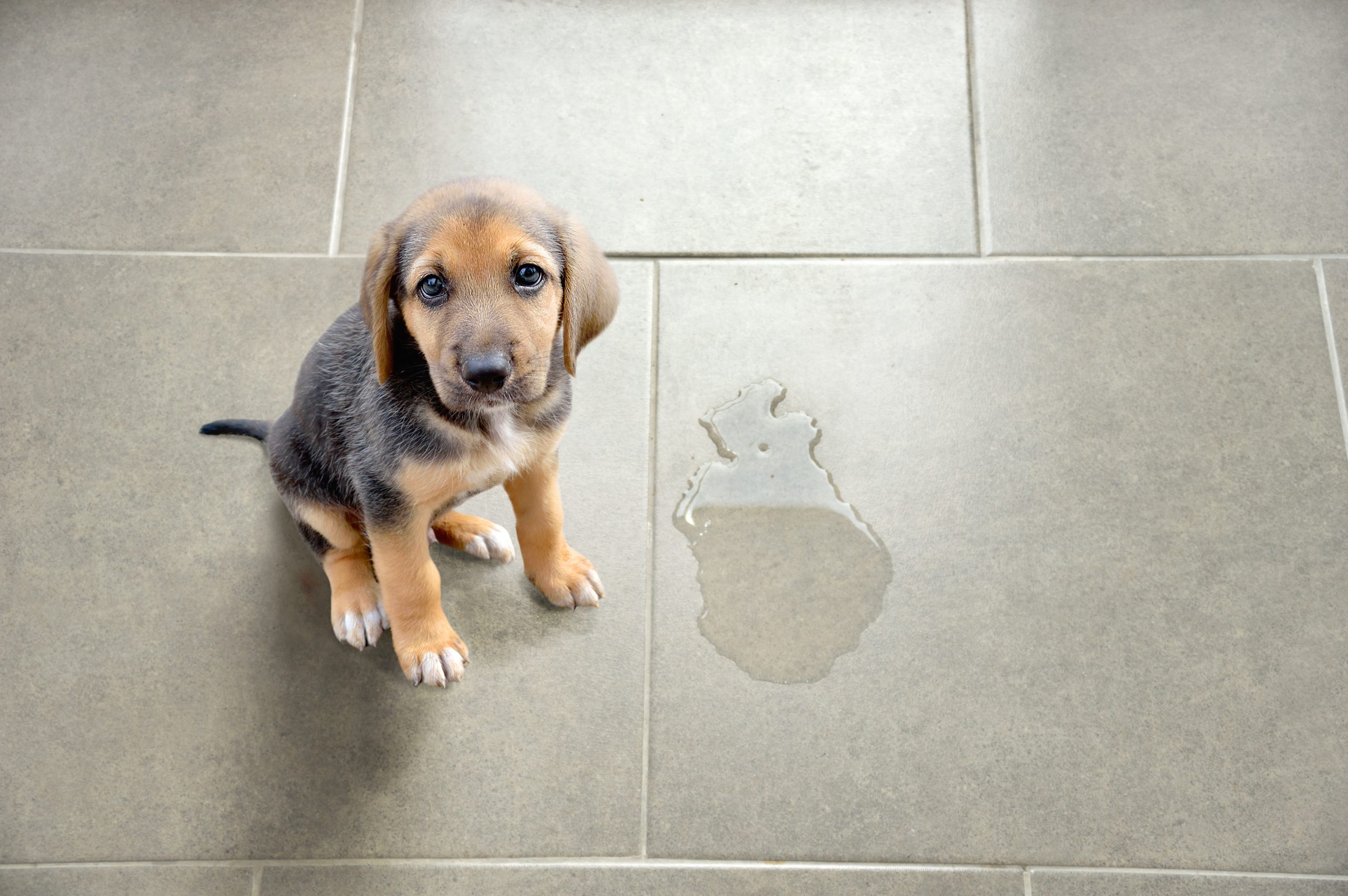 “Whether losing their home through surrender or divorce, change or loss of the pets in the home, or a dramatic upheaval in the dog’s routine because of an owner’s move or job change, the dog’s emotional reaction may be mild, as in crying for 15 minutes after being left – or it can be severe, like trying to dig their way out of the home through doors, walls, or windows,” said Dr. Bright.
“Whether losing their home through surrender or divorce, change or loss of the pets in the home, or a dramatic upheaval in the dog’s routine because of an owner’s move or job change, the dog’s emotional reaction may be mild, as in crying for 15 minutes after being left – or it can be severe, like trying to dig their way out of the home through doors, walls, or windows,” said Dr. Bright.
Diagnosis of separation anxiety
It is not always easy to determine whether a dog has separation anxiety. The Behavior staff at Angell recommends recording your dog’s behavior after you leave the house.
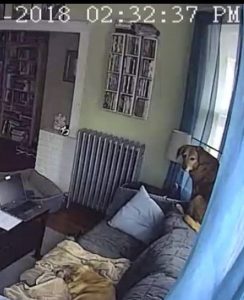 “We highly recommend surveilling your dog,” said Dr. Bright. “It’s really the only way to determine what’s going on. And you don’t have to go out and spend a lot to do it. There’s a free iOS app called Manything that converts your iPhone, iPod Touch, or iPad into a security camera.”
“We highly recommend surveilling your dog,” said Dr. Bright. “It’s really the only way to determine what’s going on. And you don’t have to go out and spend a lot to do it. There’s a free iOS app called Manything that converts your iPhone, iPod Touch, or iPad into a security camera.”
Video recordings are recommended, especially if neighbors complain, so you don’t misdiagnose your dog with separation anxiety. “He may be barking at outside stimuli, such as vehicles, people, or animals passing through the yard,” added Dr. Bright.
Also, let’s say you don’t notice any destruction or soiling in the house. Your dog could be suffering silently, for example, standing there and panting for hours without your knowledge.
“Behavior change can be gradual,” said Dr. Bright. “One day, your dog could pee in the house when you leave, and when you find the puddle, later on, you may think, ‘Oh, he still needs work on housetraining.’ And you let it slide until you get home to find many scratch marks on the door and your neighbor saying that your dog barked and howled all day long.”
The most important thing is to see your dog’s level of anxiety in the 30 minutes after you leave. If they can settle down in 15 minutes, then it’s not a clinical problem.
How to manage separation anxiety
According to Dr. Bright, anxiety is to blame for your dog’s behavior when he’s alone. “It is not motivated by spite or revenge. Punishing him for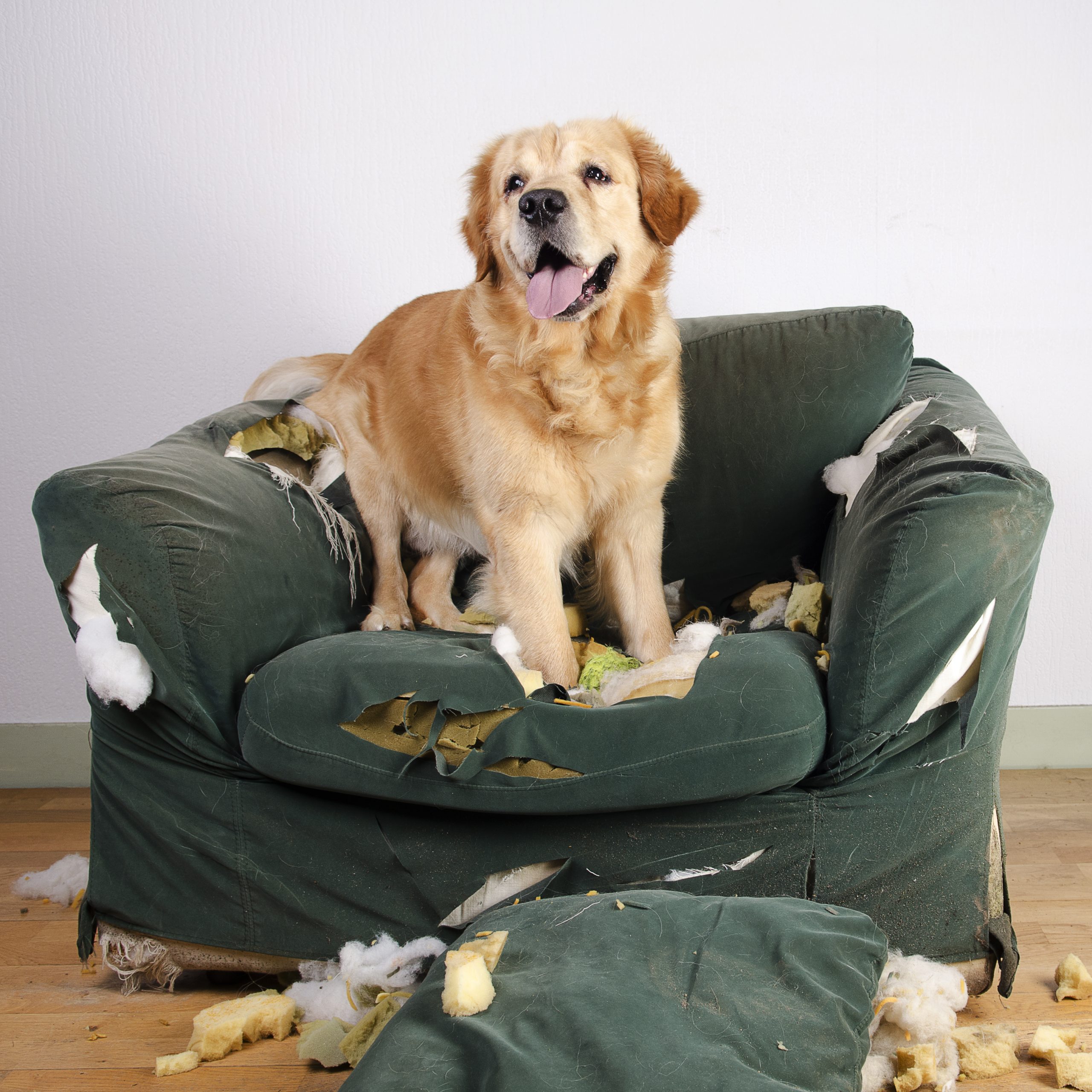 chewing or soiling the couch will only make him even more anxious.”
chewing or soiling the couch will only make him even more anxious.”
To help manage separation anxiety, you must teach your dog that being alone is not scary. And this is not an easy task if your dog has developed the habit of thinking trouble is on the horizon if you’re not around.
Things you should do
Dr. Bright suggested a few strategies to help manage your dog’s separation anxiety. “Try giving your dog the run of the entire house for 15 to 30 minutes and surveil them while you are out. Sometimes, more space equals less anxiety. We have seen patients who ceased being anxious when they weren’t closed in anywhere.”
If you see the signs of separation anxiety in your dog, start with a vet visit to rule out any underlying physical problems. Your vet may also be able to prescribe medication that can help reduce anxiety and help with any training that needs to take place.
Consult a professional behaviorist with advanced animal behavior and psychology degrees for behavior modification. You may need to see a veterinary behaviorist if multiple medications and behavior modification are needed.
More techniques to try when managing your dog’s separation anxiety:
Set up a routine
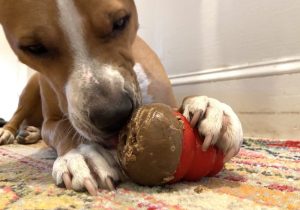 “Something that we recommend is creating a routine for your dog that happens every day, no matter what,” said Dr. Bright. “Give your dog his Kong stuffed with his favorite food or a paper bag filled with things he can rip apart (as long as they won’t be ingested). No matter what, when he sees that Kong or paper bag every day, he knows that it’s his fun stuff, and he can depend on it being part of his day.” You may be getting ready to leave, and maybe you’re not. But you’ve already established a routine, which helps control the dog’s behavior.
“Something that we recommend is creating a routine for your dog that happens every day, no matter what,” said Dr. Bright. “Give your dog his Kong stuffed with his favorite food or a paper bag filled with things he can rip apart (as long as they won’t be ingested). No matter what, when he sees that Kong or paper bag every day, he knows that it’s his fun stuff, and he can depend on it being part of his day.” You may be getting ready to leave, and maybe you’re not. But you’ve already established a routine, which helps control the dog’s behavior.
Dr. Bright also suggests creating a scavenger hunt for your dog, where you hide treats around the house for him to find. Your dog will become accustomed to searching for yummy surprises whenever you leave.
“We also find automatic treat-delivery machines such as the Treat and Train or Furbo very effective,” added Dr. Bright. “They help with routine and ease your dog’s stress – and these treat dispensing systems may do the trick for mild separation anxiety.”
Helpful training
Sit-stay and down-stay cues help teach your dog to be away from you for a bit, even indoors. (The aforementioned treat-delivery machines are great for this and come with instructions on proper training.)
Dr. Bright suggested this technique: First, try moving five feet away as your dog stays on their bed. Then, try 10 feet. Then, walk toward the door. Turn the doorknob. Then step out – and come right back in. Baby steps!
Reduce anxiety
Try to pair potential stressors with non-stressful activities. When you grab your keys or zip up your backpack, your dog may suddenly appear by your side, staring at you. He knows you’re getting ready to leave him alone when you do these things.
Even before you leave the house, dogs with separation anxiety may pace, whine, and show physical signs of stress. Try taking your keys and sitting on the couch to help tamp down any mounting anxiety your dog may feel.
Exercise
Though exercise is not a “cure” for behavior, it does provide mental stimulation. It can release endorphins that can help your dog relax and sleep. If you don’t have time for a long walk before you go to work, hide some treats or half of your dog’s breakfast in the yard for them to find.
Take your dog to work.
 Fortunately, more and more companies are allowing their employees to bring their dogs to work. Double win if your dog loves R-I-D-E-S in the car! (However, be sure you can predict how your dog will behave if closed into your office while you go to a meeting elsewhere.)
Fortunately, more and more companies are allowing their employees to bring their dogs to work. Double win if your dog loves R-I-D-E-S in the car! (However, be sure you can predict how your dog will behave if closed into your office while you go to a meeting elsewhere.)
Find a doggy daycare or dog sitter.
You shouldn’t leave your dog alone if they suffer from separation anxiety. “It just makes that correlation between your leaving and their panic more firmly cemented in their mind,” said Dr. Bright.
Instead, find a reliable and trusted doggy daycare if you cannot bring your dog to work or need to leave them behind for an extended period. If your dog is not a daycare candidate, sometimes relatives will dog sit for you until your dog can be home alone.
Things you shouldn’t do
You may learn behavior management suggestions on the Internet that are touted as practical. “In reality, these techniques either don’t help your dog or worsen his separation anxiety,” said Dr. Bright.

Don’t crate your dog.
“Dogs with separation anxiety shouldn’t be crated,” explained Dr. Bright. “This is important. It’s dangerous – they’re already panicking, so they may try to escape and hurt themselves. Even if you are certain the dog cannot escape because it is an especially strong crate, crating is not recommended.”
Don’t punish your dog.
Again, your dog is not misbehaving or acting like a “bad” dog. Your dog has a panic attack and is responding as he can.
Don’t ignore your dog.
Another common misconception? “If your dog is super-happy to see you when you’ve been gone, that doesn’t mean they have separation anxiety,” said Dr. Bright. “It simply means they are super-happy to see you.”
 So when you arrive home from work, and your dog is running around in circles like he hasn’t seen you in a year, you should greet your dog and give them lots of love. You’re happy to see them, too!
So when you arrive home from work, and your dog is running around in circles like he hasn’t seen you in a year, you should greet your dog and give them lots of love. You’re happy to see them, too!
Don’t use scary training equipment.
Don’t use devices that mask or worsen your dog’s anxiety symptoms, such as shock and vibrating collars. As your dog learns that panicking will cause pain, he’ll become more afraid of the situation, which is already stressing him out.
* * *
Unfortunately, sometimes separation anxiety doesn’t go away, so your best bet is to manage the symptoms to ensure your dog feels comfortable and safe. Your efforts will help him live a happy, healthy life as you provide the best care possible.
For information on the MSPCA-Angell’s Behavior Department and Dr. Terri Bright, visit https://www.angell.org/behavior.




